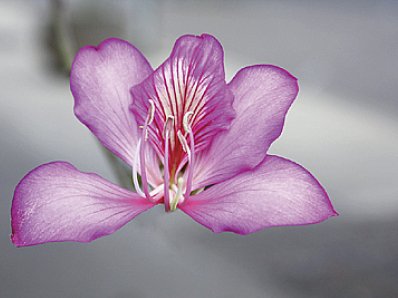Phuket Gardening: Location is everything

PHUKET: One of the first things to consider when creating a new garden or re-vamping an old one, is to work out which plants do well in your locale. There are more micro-climates around than we realize – even in Phuket. So it’s a good idea to do some homework in your area and discover which garden plants are successful and why.
Let’s take one distant example. A friend of mine has an English wood that is carpeted with wild primroses every March. A mile away, another friend can’t get any primroses to grow for love nor money, even though conditions appear similar.
Why? Who knows. But an educated guess would probably link the disparity to soil quality, and the availability of suitable nutrients and moisture in the earth. Primroses need little sun, but plenty of water and an acidic soil. Plants only naturalize when conditions are right.
Switch 7,000 miles to Phuket… The owner of an island spa has just camouflaged a bare, sun-drenched wall with some new shrubs. He has chosen pairs of wrightia religiosa, ylang ylang, bauhinia blakeana (Hong Kong orchid tree), magnolia champaca, and, at each end, fiddle-woods (citherexylum).
There are already mature ylang ylang vines draped over the trellis outside the sauna, already a row of wrightias flourishing in shade behind the relaxation area, a single magnolia champaca set in a grassy area.
These same species are doing well in their new environment, having already shown that soil conditions in the spa are conducive to their particular needs. And the newly planted wrightias are not phased by the remorseless sun, since they are shrubs that will tolerate most conditions – except bone-dry soil.
The tulip trees, magnolias and fiddle-woods, accustomed to sunny aspects, are also doing well. Interestingly, all these species are thriving in other gardens in the vicinity.
So the spa people have, quite literally, done their homework in choosing shrubs and small trees appropriate for the location. Furthermore, the new plants have been regularly watered and mulched, and a raised ridge of soil forming a circle round each one has ensured its retention..
A second matter to consider with a new planting is the size and the growth habit of your new charges. For example, the ylang ylang (cananga odorata) is technically a vine, and will eventually need support. In time, maybe, it can be attached to the adjacent wall.
The tulip trees and champacas will eventually reach fifteen to twenty feet and will stand on their own. No problem. Always a good choice. So too the fiddle-woods, the fastest growing, and ultimately the largest of this quintet. Sensibly they have been placed at each end of the wall, so that they will not crowd out their smaller brethren.
The wrightias are perhaps the most surprising selection, since they are small shrubs, rarely more than six feet in height, and usually used as screens or hedges. Still, they will doubtless prove effective under-storey shrubs once the others get into their stride.
I almost forgot. All these varieties produce beautiful blooms – the orchid tree, the largest and most exotic purple flowers; the champaca, attractive cream or pale yellow flowers. The fiddle-wood blossoms abundantly, producing long spikes of tiny white blooms. Ylang ylang has distinctive deep yellow, in-curved petals, and wrightia has clusters of delicate drooping white blooms.
Oh, and one other very relevant thing…. All these shrubs and trees, with the exception of the scentless bauhinia, exude the most delightful fragrance. And in the setting of a spa, that is surely the most important consideration of all.
Phuket Gardening is Patrick Campbell’s feature of all things flora.
If you have a question or a garden that you would like featured, you can email Patrick Campbell here.
Keep checking our online Phuket Lifestyle pages for regular gardening features and tips.
— Patrick Campbell
Latest Thailand News
Follow The Thaiger on Google News:


























